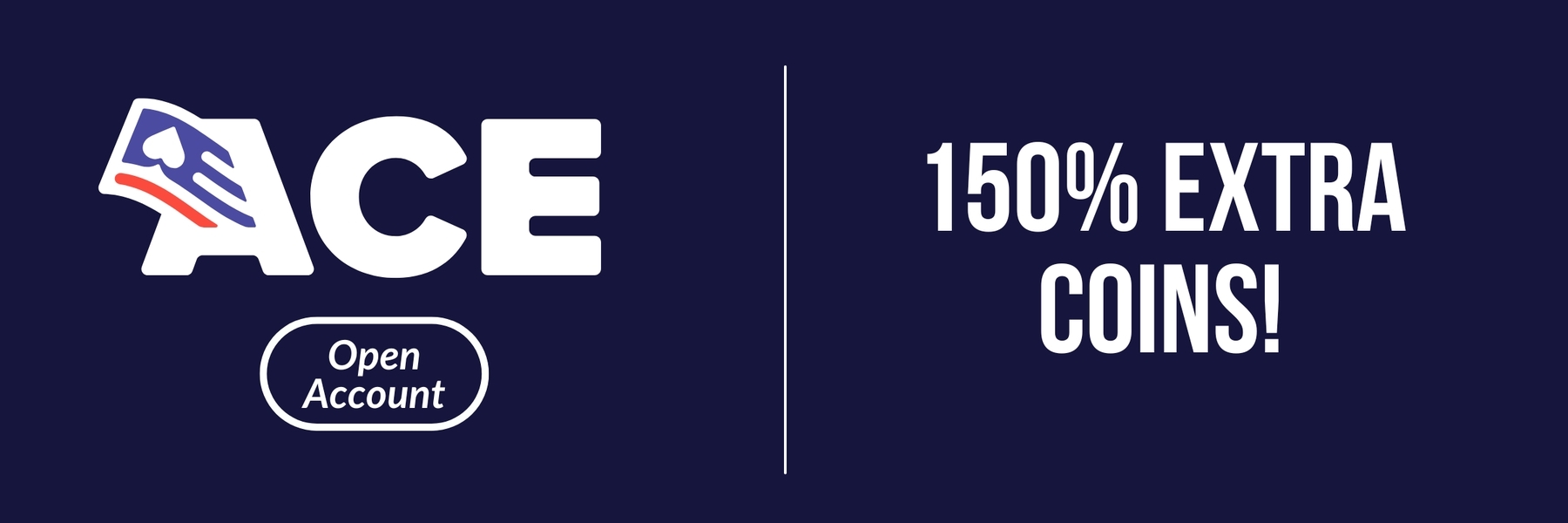Ok, so there is a huge UFC card tonight and you want to bet on some action, what are your options? Lets break them down:
Moneyline
The moneyline bet is a very easy term to understand. Simply put, if you are betting on the moneyline, you are betting on a fighter to win the fight. In MMA, there are three possible results for a moneyline bet; your fighter wins, and you win the bet, your fighter loses and you lose the bet, or the fight is a draw and your bet is voided.
For example, if the moneyline has McGregor at +175 and Poirier at -200. Based on this line Poirier is favoured to win. If you bet $100 on Poirier you would net $50. If you bet $100 on McGregor you would net $175.
Total Rounds (Over/Under)
Total rounds are over/under bets that are based on the total number of rounds the fight will last before a winner is announced.
Let's use the example of a fight that is set at 2.5 rounds:
- If the fight lasts 1 or 2 rounds, the Under is the winning play.
- If the fight lasts 3 rounds or longer, the Over is the winning play.
In MMA fighting, it is typical for heavyweight fights to last a shorter period of time compared to lightweights. When bookmakers set the line for the total, they consider how aggressive / defensive the fighters' style may be. Heavyweights are known to throw harder punches and go for the knockout, so heavyweight fights typically will last a shorter period.
Prop Bets
In MMA, bettors have a limited amount of prop bets available to them compared to other sports such as football. A prop bet is a bet type that may or may not involve the winner of the fight. The most popular MMA prop bets are round betting (who wins and in what round) and method of victory (how they win). See below for examples:


Method of Victory Bets
With method of victory bets, you can zero in on exactly how a fight will be decided—not just who will win. This prop bet lets you wager on whether your chosen fighter gets their hand raised by:
- Knockout, TKO, or Disqualification: This covers any stoppage due to strikes or if a fighter breaks the rules and is disqualified.
- Submission: Here, you’re betting that the fight ends with a tap-out, verbal submission, or the ref stepping in due to a submission hold.
- Decision: The judges score the fight, and your fighter wins by the numbers on the cards after all rounds are complete.
Since these bets are more precise than just picking the winner, they offer tastier odds—especially if you manage to call an upset or less likely outcome. For example, a Francis Ngannou KO pays less than a Khabib Nurmagomedov KO, since Ngannou is more known for his knockouts, while Khabib typically wins by submission or decision. The riskier your prediction, the bigger the potential payout.
Prop bets are a fun way to bet on MMA, and your best chance at hitting a big payout.
Future Bets
Future bets exist in MMA, but they are not very popular. But if you are interested in them, you can place wagers on who will be the Champion of every division at a certain time. For example, on DraftKings you can now bet on who will be the champion of each division on December 31st, 2025.
In Play / Live Betting
Live betting is a popular option among sports bettors; it is simply placing wagers on a fight as the fight is unfolding in real time. This option is available for all the major sport markets, including MMA. The most popular live betting for MMA is on the moneyline. Sportsbooks have developed algorithms that spit out live odds as the fight is occurring. Normally you have a very small window to place your bet as every punch or takedown affects the new lines moving forward. If you like a live line that your sportsbook is offering, bet it fast, because that line will soon be off the board. In addition to live plays, sportsbooks offer new lines and odds during every commercial break, giving you a few minutes to place your wagers. Keep in mind that live bets have a greater vig (more expensive).
Understanding UFC Fight Odds Calculation
UFC fight odds are typically presented using the American odds format. This system is designed to give bettors a clear understanding of potential payouts and the implied probability of each outcome. Let’s break it down:
American Odds Explained
- Favorites: When a fighter is favored to win, their odds are represented with a minus (-) sign. The number following this sign tells you how much money you need to wager to win $100. For instance, if a fighter has odds of -150, you must bet $150 to earn a $100 profit.
- Underdogs: Conversely, odds for underdogs come with a plus (+) sign. This number indicates the amount you will win if you place a $100 bet. So, if an underdog’s odds are +200, a $100 bet would net you $200 in profit.
Factors Influencing Odds
Several factors can influence the odds set for a UFC fight, such as:
- Fighter Records: A fighter’s win-loss history can tip the odds in their favor or against them.
- Recent Performances: Recent form and any changes in performance can shift odds significantly.
- Injuries and Training: Injuries or changes in training partners and strategies can also be crucial.
- Betting Trends: Public betting patterns and shifts in wagers can lead sportsbooks to adjust their odds to balance their books.
How Weight and Reach Create Value in UFC Odds
When analyzing UFC odds, weight and reach are two stats savvy bettors can leverage for potential value. Both give unique insights into how a fight might unfold and when a line isn’t fully accounting for a key advantage (or disadvantage).
- Weight-Class Trends: Some fighters cut significant weight to compete in a lighter division, hoping to gain a size advantage come fight night. However, tough weight cuts can leave athletes depleted, draining energy and making them less explosive or durable. Monitoring pre-fight reports, fighter interviews, and weigh-in results can reveal whose cut was smooth versus who struggled. A fighter who’s visibly drained after cutting too much weight may be overvalued if oddsmakers haven’t adjusted.
- Rehydration and “Walking Weight”: On the flip side, those who rehydrate and return to their natural weight after weigh-ins can enjoy power and size advantages once the fight begins. If you spot a fighter known for bouncing back considerably heavier or stronger than their opponent, and odds don’t reflect that edge, there may be an opportunity to bet with value.
- Reach as a Tactical Edge: Reach—the distance from fingertip to fingertip—matters even more when matched with certain fighting styles. A longer reach allows fighters to strike while staying outside their opponent’s range. This is especially beneficial for disciplined strikers and counter-punchers. If a fighter has a significant reach advantage but also excels at keeping opponents at bay, look for odds that haven’t fully priced in this stylistic mismatch.
Key Takeaways for Bettors:
- Before placing a bet, research each fighter’s weight cut history and walking weight.
- Watch weigh-ins or dig into reports for signs of fatigue or severe dehydration.
- Factor in how a reach advantage complements a fighter’s style (i.e., jab-heavy boxers or proficient kickboxers).
- Compare this analysis with the current odds—often, lines favor reputation or winning streaks over nuanced physical advantages.
By digging into these aspects and comparing them with how sportsbooks are setting numbers, you'd be surprised how often you’ll spot opportunities the average bettor (and even the oddsmakers) may overlook.
Weight Classes, Weight Cuts, and Betting Implications
When sizing up a UFC fight, don’t overlook the impact of weight classes and how fighters manage their weight before stepping into the octagon. In MMA, athletes compete across various weight divisions, and moving up or down a class can dramatically affect a fighter’s performance and the lines set by sportsbooks.
Fighters who struggle to make weight often undergo extreme measures—think harsh dieting, overtraining, or severe dehydration—to tip the scales just right at the official weigh-ins, usually held the day before a fight. These last-minute weight cuts can sap an athlete’s strength and endurance, sometimes leaving them a shadow of themselves on fight night. As a bettor, being aware of a fighter who barely squeaks under the limit—or who’s visibly drained—can be a valuable edge, as these athletes may fade under pressure or struggle to recover fully by the next day.
On the flip side, some competitors “cut” massive amounts of weight only to quickly rehydrate and bulk back up after the weigh-in. This can translate to a significant size or strength advantage once the cage door closes, especially against opponents who are naturally smaller or less effective at rehydrating.
Here are a few key tips for factoring weight and weight management into your UFC betting strategy:
- Monitor Weigh-in Results: Track fighter weigh-ins and look for reports on severe weight cuts or misses.
- Consider Natural Weight: Fighters who frequently move between weight classes might not have fully adjusted to their new division, which could affect stamina or power.
- Assess Physical Recovery: Pay attention to updates after weigh-ins—sometimes fighters will look visibly healthier after rehydrating, while others may remain visibly diminished.
Factoring in these physical and strategic elements can help you interpret shifting odds, spot value, and steer clear of common betting pitfalls.
Why Reach Matters in MMA Betting
Reach—the distance a fighter can extend their arms—is a key aspect to weigh when analyzing MMA fights. A fighter with a reach advantage can keep their opponent at bay, landing punches while avoiding return fire. This is especially beneficial for strikers, as they can dictate the pace from a safer distance and chip away at their opponent’s defenses.
However, it’s not just about the size of the reach; it’s how a fighter uses it. Look for matchups where a fighter has both a reach edge and the style to capitalize on it—such as precise jabs or a strong kicking game. When handicapping a bout, consider how the fighters’ reaches interact with their fighting styles, as these mismatches often influence both the odds and the eventual outcome.
Why Stance Matters: Orthodox vs. Southpaw in Handicapping
When you’re breaking down a fight, one detail that can make a real difference is each fighter’s stance. The majority of fighters use an orthodox stance (left foot forward, right hand dominant), but southpaws (right foot forward, left hand dominant) can pose unique challenges.
Why does this matter? Well, most fighters spend the bulk of their training—and their careers—squaring off against orthodox opponents. When two orthodox fighters meet, their habits and defensive instincts often line up. But when a southpaw enters the cage, it’s a different puzzle entirely. The angles change, punches come from unexpected directions, and tried-and-true counters might not work as planned.
A classic example: southpaw fighters like Conor McGregor or Dustin Poirier often land their straight left hand against orthodox opponents who aren’t used to that line of attack. This unfamiliarity can lead to defensive lapses, creating more opportunities for knockouts or significant strikes.
When you’re handicapping a bout, take a close look at how experienced each athlete is against the opposite stance. Fighters with limited exposure to southpaws can find themselves in deeper water than the odds might suggest. On the flip side, a seasoned southpaw might have a history of frustrating—and defeating—orthodox foes.
Understanding these elements can empower you as a bettor, allowing you to make more informed decisions. By interpreting the odds and their calculations, you can enhance your betting strategy and potentially increase your winnings.
Understanding these elements can empower you as a bettor, allowing you to make more informed decisions. By interpreting the odds and their calculations, you can enhance your betting strategy and potentially increase your winnings.
The Pitfalls of Record Comparison and “MMA Math”
At first glance, you might think that tallying up a fighter’s record reveals everything you need to know—but looks can be deceiving. Records are only part of the story, and they can easily mislead those who don’t look deeper. Why? For starters, a win is not always created equal. One fighter may have racked up their victories against lesser-known or less-skilled opponents, while another has built a gritty résumé battling seasoned, elite contenders. Simply counting wins and losses skips over this vital context.
Another common trap is the so-called “MMA Math”—the logic that if Fighter A lost to Fighter C, but Fighter B beat Fighter C, then Fighter B should logically beat Fighter A. It sounds tidy in theory, but MMA doesn’t always follow a linear path. Each matchup has unique factors: fighting styles, reach, strengths and weaknesses, and even how fighters perform under pressure. Past opponents also frequently overlap within weight classes, complicating the equation even more.
Rather than relying solely on records or the allure of MMA Math, it’s smarter to dig deeper—analyzing fight footage, checking the quality of previous opponents, and understanding each fighter’s evolution. Avoid letting raw numbers steer your bets. Taking extra time to understand how fighters actually match up—not just on paper—will give you a much clearer edge.
MMA Tips & Strategies
If you want to increase your chances of being a successful bettor, here are a few tips to help you on your way:
- Price Shopping: When placing a bet, you always want to make sure you are getting the best price/line possible. Don’t be afraid to shop around. Different sportsbooks offer different prices; and they fluctuate throughout the day. If you want to save a ton of time, check out the Betstamp App. It's free to join, and all the line shopping is quickly and efficiently done for you. You get updates in real time of which sportsbooks are offering the best line.
- Track Your Bets: Keep records of your wagers and stay on top of what is working and not working for you. Without documenting your bets, it is difficult to see where you are winning or losing as a bettor. Use a tool like Betstamp to easily track your bets and analyze your ROI by league & time period, CLV, and much more.
- Bankroll Management: Set your bankroll and learn to manage it properly. Don't deviate too far from your average bet size and ensure that you are always betting within your limits.
- Hype vs Reality: It is notoriously difficult for sportsbooks to correctly handicap MMA action. This presents an opportunity to bettors to take advantage of weak lines that some sportsbooks may offer. A fighter's reputation might often exceed his true skill set or value. Do not get caught in the hype of a fighter. Instead, try to evaluate each fighter on a fight-to-fight basis. Who is the opponent? How do the fighters match up against one another? What are their strengths and weaknesses?
- Fighters Coming off Injury / Rest: This may be one of the trickiest situations to account for. If a fighter has not been in the octagon for 12 months, how will he perform? Will he be well rested or just rusty? These questions are often difficult to answer. Be wary of laying a lot of action on fighters coming off major injury or rest.
Looking for free UFC picks?
We're utilizing the Betstamp Player Prop Tool to identify positive expected value bets for every UFC PPV. This data-driven approach has won our users MILLIONS over the past 3 years, and we aim to uncover valuable, mis-priced bets across various sports to provide disciplined, sustainable profit to users! Check out our UFC picks here.
Scale Your Winnings With Betstamp PRO
Betstamp Pro saves you time and resources by identifying edges across 100+ sportsbooks in real-time. Leverage the most efficient true line in the industry and discover why Betstamp Pro is essential for top-down bettors.
Limited number of spots available! Apply for your free 1-on-1 product demo by clicking the banner below.















